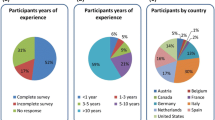Abstract
At the present, Indirect Immunofluorescence (IIF) is the recommended method for the detection of antinuclear autoantibodies (ANA). IIF diagnosis requires both the estimation of the fluorescent intensity and the description of the staining pattern, but resources and adequately trained personnel are not always available for these tasks. In this respect, an evident medical demand is the development of computer-aided diagnosis (CAD) tools that can offer a support to physician decision. In this paper we first propose a strategy to reliably label the image data set by using the diagnoses performed by different physicians, and then we present a system to classify the fluorescent intensity. Such a system adopts a multiple expert system architecture (MES), based on the classifier selection paradigm. Two different selection rules are presented and, given the application domain, the convenience of using one of them is analyzed. Different sets of operating points are determined, making the recognition system suited to application in daily practice and in a wide spectrum of scenarios. The measured performance on an annotated database of IIF images shows a low overall miss rate (<1.5%, 0.00% of false negative).





Similar content being viewed by others
References
Klippel JH, Dieppe PA (1998) Rheumatology, 2nd edn. Mosby International, St. Louis
Kavanaugh A, Tomar R, Reveille J, Solomon DH, Homburger HA (2000) Guidelines for clinical use of the antinuclear antibody test and tests for specific autoantibodies to nuclear antigens. Am Coll Pathol Arch Pathol Lab Med 124:71–81
Marcolongo R, Ruffatti A, Morozzi G (2003) Presentazione linee guida del forum interdisciplinare per la ricerca sulle malattie autoimmuni (F.I.R.M.A.). Reumatismo 55:9–21
Pham BN, Albarede S, Maisonneuve P (2005) Impact of external quality assessment on antinuclear antibody detection performance. Lupus 14:113–119
Song L, Hennink EJ, Young IT, Tanke HJ (1995) Photobleaching kinetics of fluorescein in quantitative fluorescence microscopy. Biophys J 68:2588–2600
Piazza A, Manoni F, Ghirardello A, Bassetti D, Villalta D, Pradella M, Rizzotti P (1998) Variability between methods to determine ANA, anti-ds DNA and anti-ENA autoantibodies: a collaborative study with the biomedical industry. J Immunol Methods 219:99–107
Das s.r.l. (2004) Service Manual AP16 IF Plus. Palombara Sabina (RI)
Bio-Rad Laboratories Inc. (2004) PhD System. http://www.bio-rad.com
Perner P, Perner H, Muller B (2002) Mining knowledge for hep-2 cell image classification. J Artif Intell Med 26:161–173
Sack U, Knoechner S, Warschkau H, Pigla U, Emmerich F, Kamprad M (2003) Computer-assisted classification of HEp-2 immunofluorescence patterns in autoimmune diagnostics. Autoimmun Rev 2:298–304
Hiemann R, Hilger N, Michel J, Anderer U, Weigert M, Sack U (2006) Principles, methods and algorithms for automatic analysis of immunofluorescence patterns on HEp-2 cells. In: 5th International Congress on Autoimmunity, Sorrento, Italy, Autoimmunity Review and other Journals 86
Soda P, Iannello G (2006) A multi-expert system to classify fluorescent intensity in antinuclear autoantibodies testing. In: Computer Based Medical Systems, Los Alamitos, CA, USA, IEEE Computer Society, pp 219–224
Soda P, Iannello G (2006) Experiences in ANN-based classification of immunofluorescence images. Enformatika Trans Eng Comput Technol 14:252–257
Nattkemper TW, Ritter HJ, Schubert W (2001) A neural classifier enabling high-throughput topological analysis of lymphocytes in tissue sections. IEEE Trans Inform Technol Biomed 5:138–149
Cheng HD, Cai X, Chen X, Hu L, Lou X (2003) Computer-aided detection and classification of microcalcifications in mammograms: a survey. Pattern Recognit 36:2967–2991
De Santo M, Tortorella F, Molinara M, Vento M (2003) Automatic classification of clustered microcalcifications by a multiple expert system. Pattern Recognit 36:1467–1477
Van Ginneken B, Ter Haar Romeny BM, Viergever MA (2001) Computer-aided diagnosis in chest radiography: a survey. IEEE Trans Med Imaging 20:1228–1241
Tuzel O, Yang L, Meer P, Foran DJ (2007) Classification of hematologic malignancies using texton signatures. Pattern Anal Appl 10:277–290
Center for Disease Control (1996) Quality assurance for the indirect immunofluorescence test for autoantibodies to nuclear antigen (IF-ANA): approved guideline. NCCLS I/LA2-A 16
Dhawan AP, Chitre Y, Kaiser-Bonasso C, Moskowitz M (1996) Analysis of mammographic microcalcifications using gray-level image structure features. IEEE Trans Med Imaging 15:246–259
Kittler J, Hatef M, Duin RPW, Matas J (1998) On combining classifiers. IEEE Trans Pattern Anal Mach Intell 20:226–239
Woods K, Kegelmeyer WP, Bowyer K (1997) Combination of multiple classifiers using local accuracy estimates. IEEE Trans Pattern Anal Mach Intell 19:405–410
Kuncheva LI, Bezdek JC, Duin RPW (2001) Decision template for multiple classifier fusion: an experimental comparison. Pattern Recognit 34:299–314
Jacobs RA, Jordan MI, Nowlan SJ, Hinton GE (1991) Adaptive mixtures of local experts. Neural Comput 3:79–87
Stefano CD, Sansone C, Vento M (2000) To reject or not to reject: that is the question : an answer in case of neural classifiers. IEEE Trans Syst Man Cybern C 30:84–93
Rastrigin LA, Erenstein RH (1982) Method of collective recognition. Energoizdat, Moscow
Alpaydin E, Jordan MI (1996) Local linear perceptrons for classification. IEEE Trans Neural Netw 7:788–792
Cordella LP, Foggia P, Sansone C, Tortorella F, Vento M (1999) Reliability parameters to improve combination strategies in multi-expert systems. Pattern Anal Appl 2:205–214
Cordella LP, Sansone C (2007) A multi-stage classification system for detecting intrusions in computer networks. Pattern Anal Appl 10:83–100
Cohen J (1960) A coefficient of agreement for nominal scales. Educ Psychol Meas 20:37–46
Landis JR, Kock GG (1997) The measurement of observer agreement for categorical data. Biometrics 33:159–174
Acknowledgments
We thank Antonella Afeltra, Amelia Rigon and Danila Zennaro for their collaboration in IIF images annotation and evaluation. We also thank Dario Malosti for his constant encouragement and support. This work has been funded by Das s.r.l of Palombara Sabina (http://www.dasitaly.com), by the “Regione Lazio” under the programme “DOCUP 2000/2006-Sottomisura II.5.2-Progetto ITINERIS”.
Author information
Authors and Affiliations
Corresponding author
Rights and permissions
About this article
Cite this article
Soda, P., Iannello, G. & Vento, M. A multiple expert system for classifying fluorescent intensity in antinuclear autoantibodies analysis. Pattern Anal Applic 12, 215–226 (2009). https://doi.org/10.1007/s10044-008-0116-z
Received:
Accepted:
Published:
Issue Date:
DOI: https://doi.org/10.1007/s10044-008-0116-z




